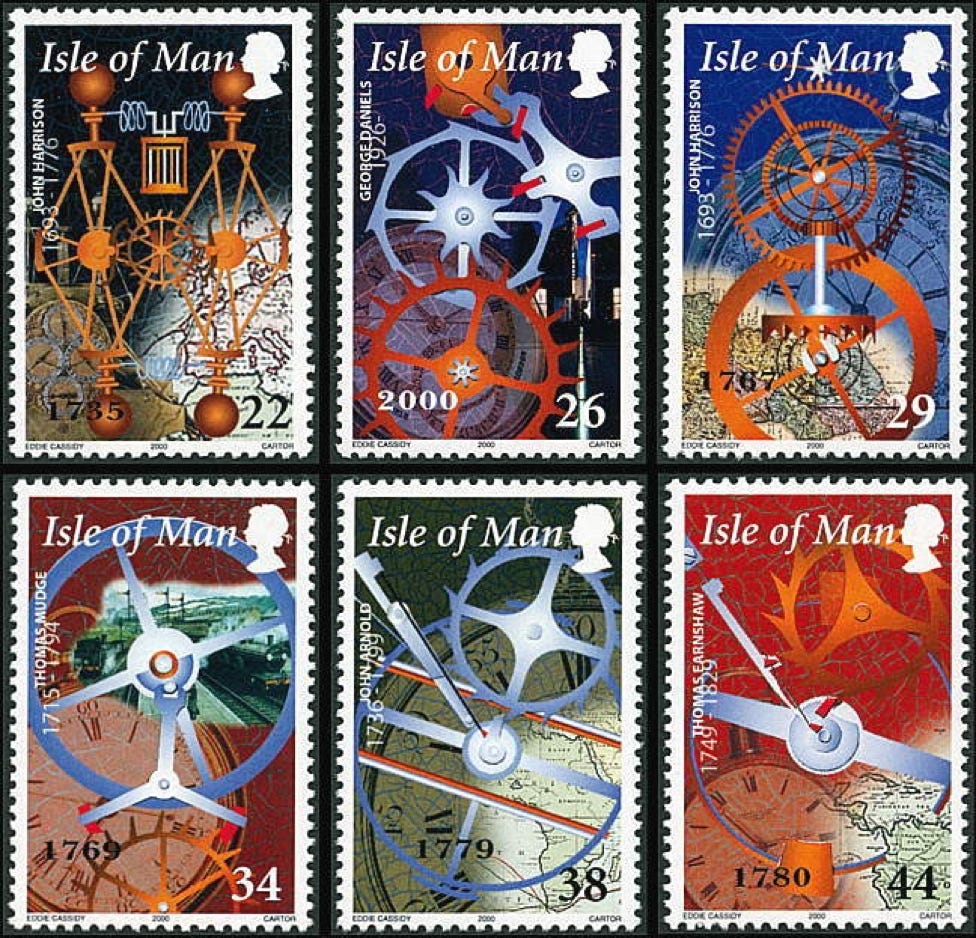2000 A Story of Time (Isle of Man)
British contributions to the development of clocks and watches are illustrated in this set of six stamps, designed by Eddie Cassidy and issued by the Isle of Man in 2000 January. The inventor of the marine chronometer, John Harrison, is honoured on the 22p and 29p stamps. These stamps illustrate part of the mechanisms of the first and last of his series of four timekeepers, known as H1 and H4 respectively. The date 1735 on the 22p stamp refers to the year in which H1 was completed, while the 29p stamp bears the date 1767, the year in which Harrison revealed the secrets of the construction of H4.
Harrison is much-honoured on British stamps – his work is also the subject of the 1993 Marine Timekeepers set as well as appearing in the 1990 Astronomy set and the Timekeeping stamp of 1999.
In the period immediately following Harrison, three names stand out: Thomas Mudge, John Arnold, and Thomas Earnshaw. Mudge was the inventor of the lever escapement, shown on the 34p stamp, which became the standard escapement for ordinary domestic pocket and wrist watches. The first watch to incorporate this escapement was made by him in 1769, the date shown on the stamp.
Arnold and Earnshaw produced timekeepers that were simpler than Harrison’s, but still reliable, and at a price that was affordable to navigators. It was Arnold who first used the term ‘chronometer’ in 1779 for his highly accurate timepieces. Earnshaw’s stamp bears the date 1780, the year in which he conceived the idea of the spring detent escapement which improved on Arnold’s design and was used in virtually all marine and pocket chronometers for the following century and a half.
The most recent advance is recognized by the second stamp in the series, for first-class mail. This shows the coaxial escapement invented by George Daniels (1926–2011), which is said to be the first practical new watch escapement since Thomas Mudge’s lever escapement. Dr Daniels, a resident of the Isle of Man, was the consultant for this stamp set.
I am grateful to Jonathan Betts, Curator of Horology at the Royal Observatory in Greenwich, for explaining the significance of the dates on the Mudge, Arnold, and Earnshaw stamps.
Stanley Gibbons nos. 869–874
